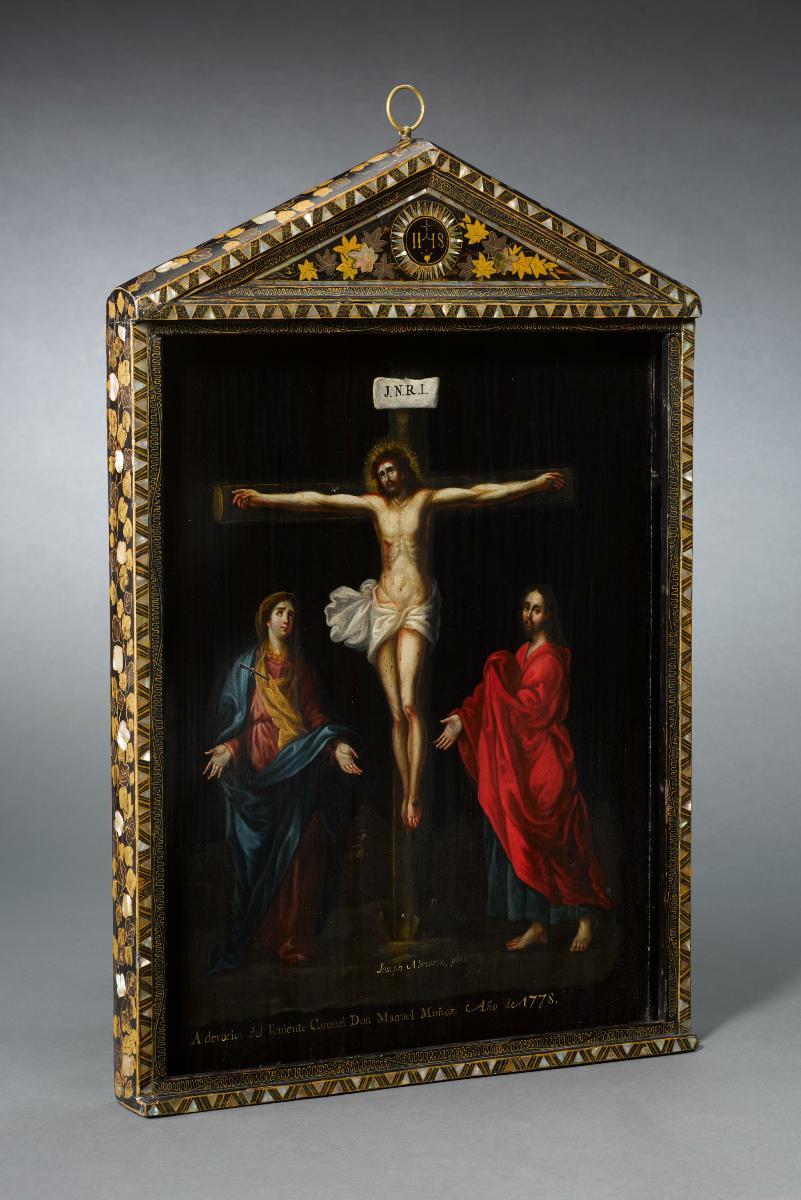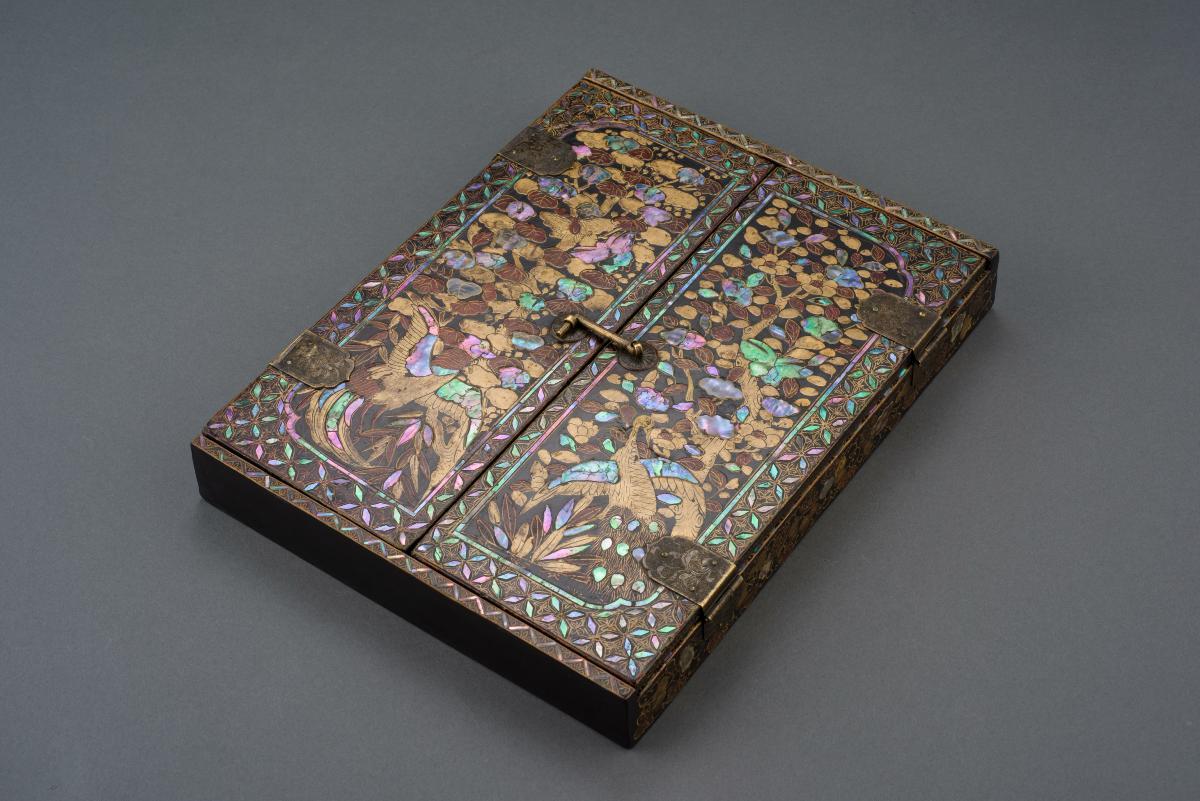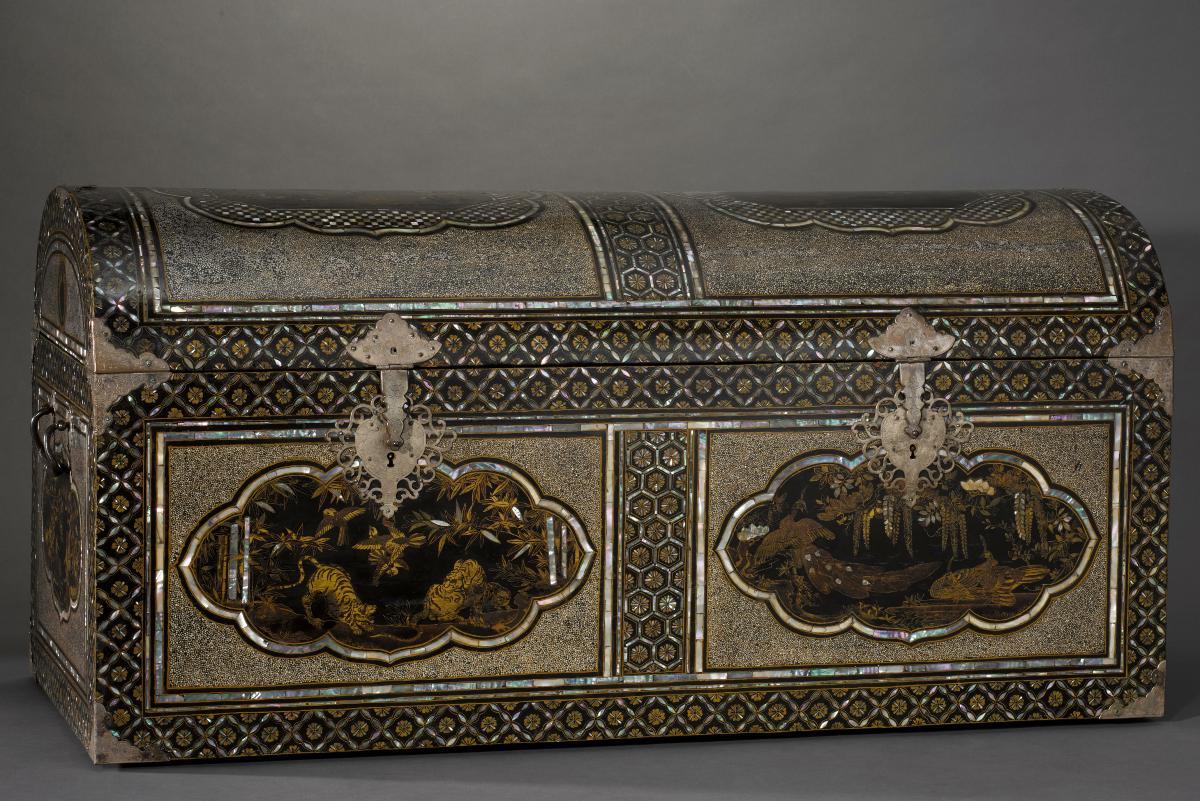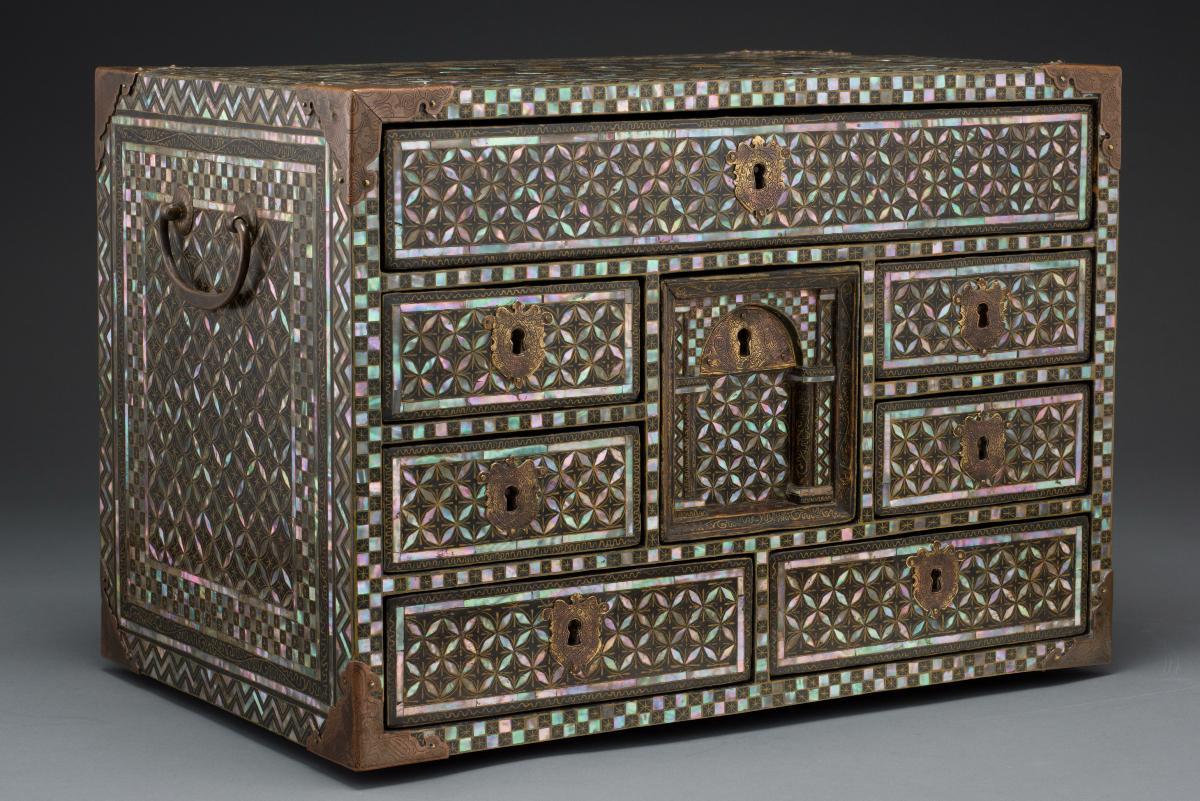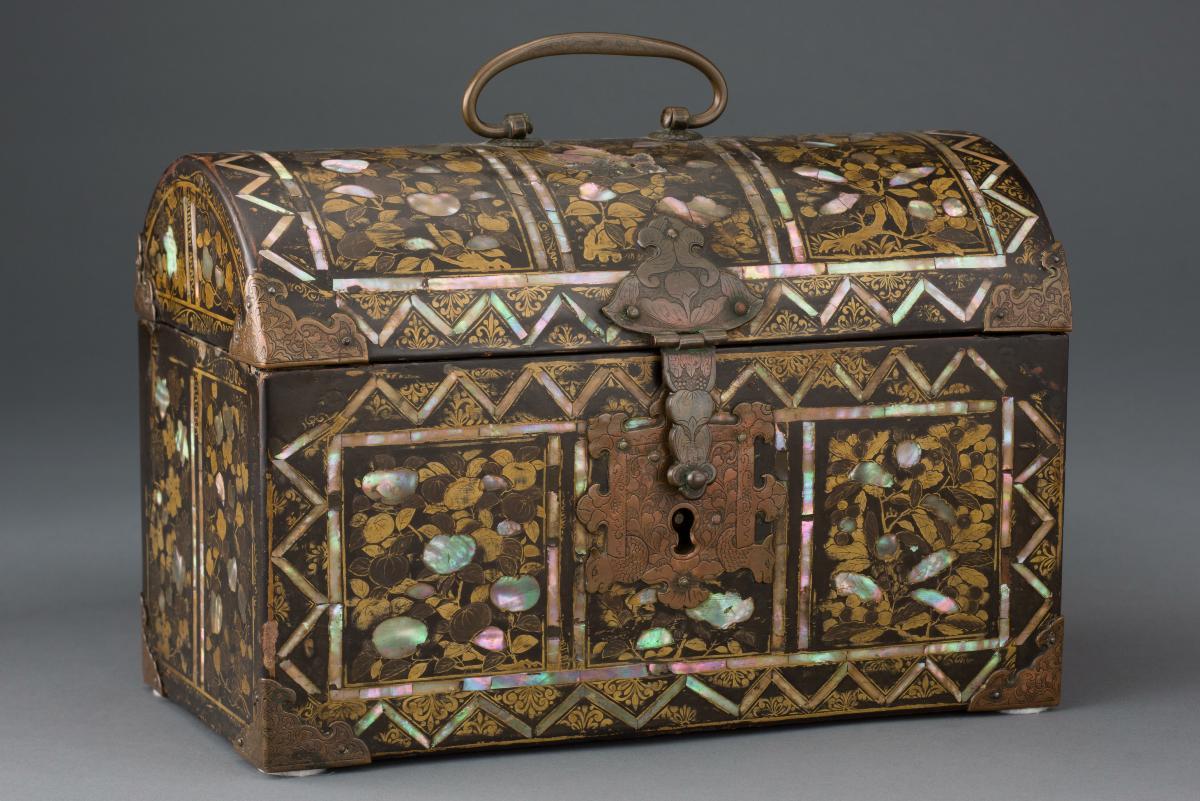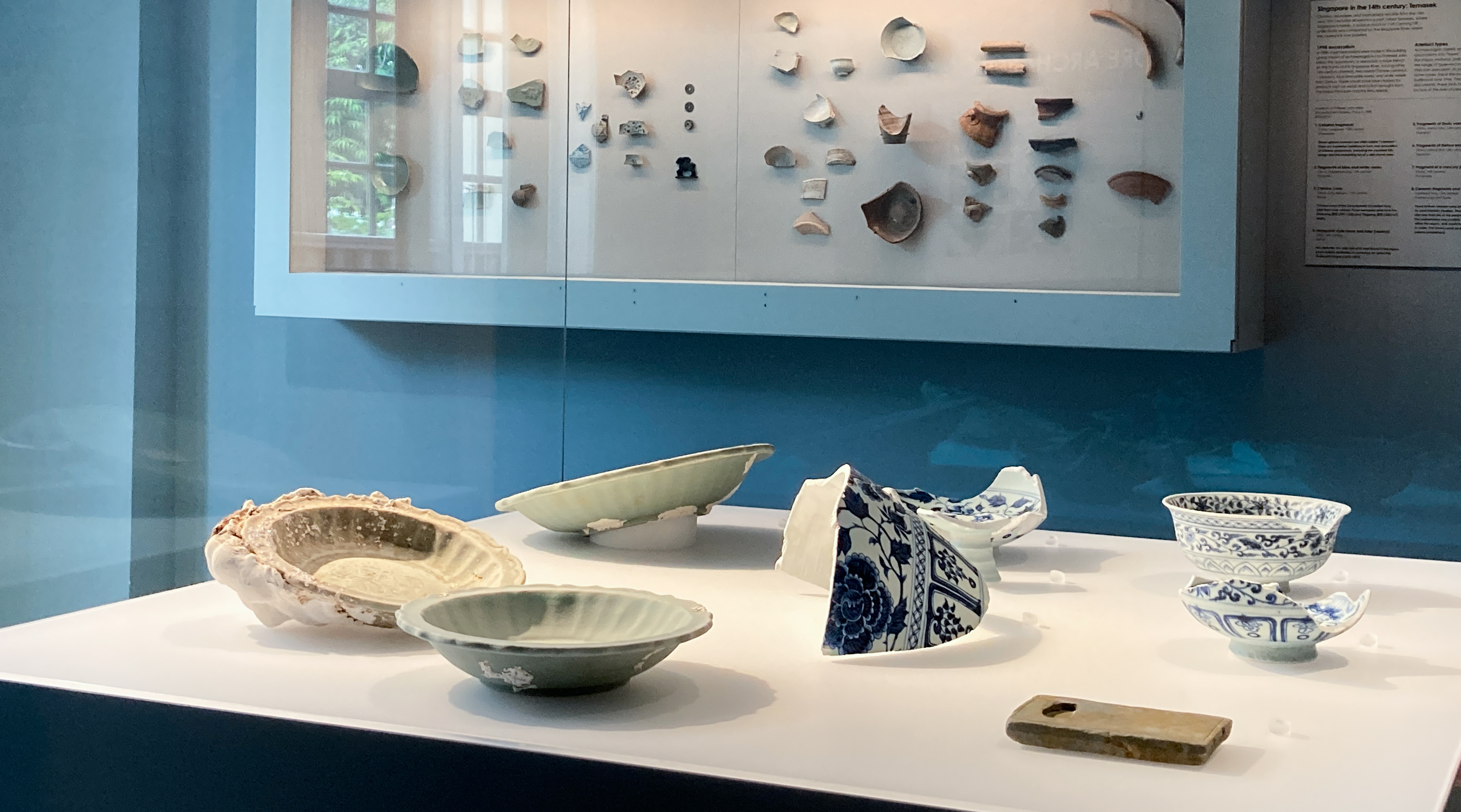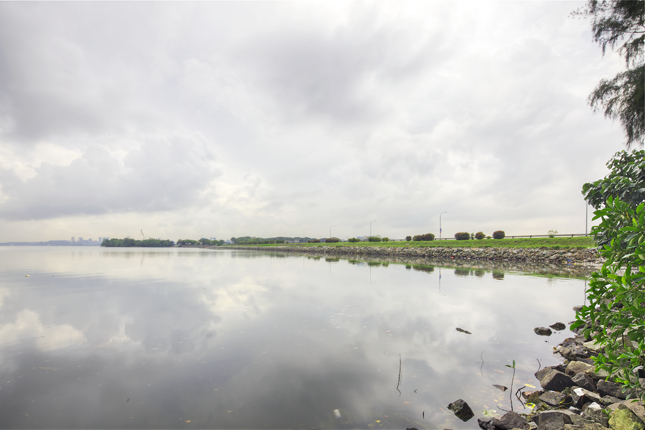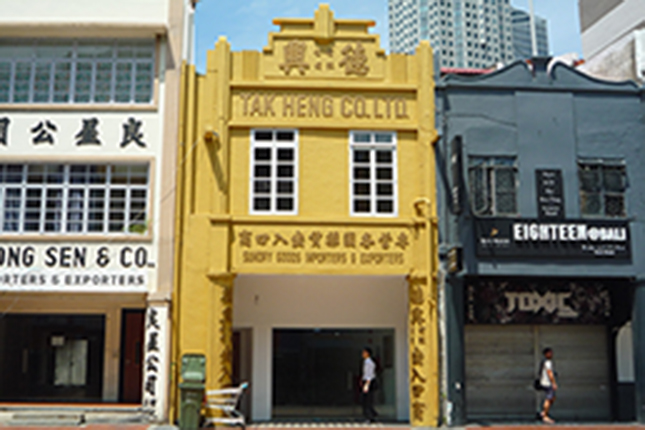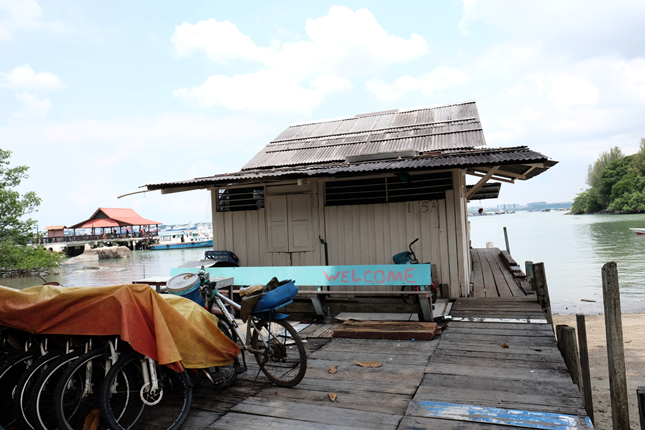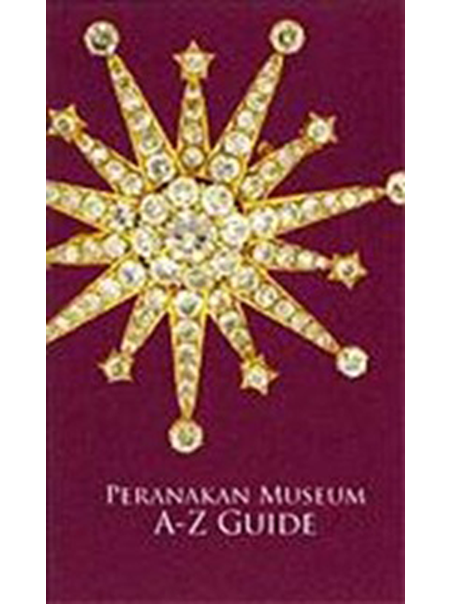¬The proposed acquisition is a Japanese lacquer export oratory (seigan). Made of Hinoki cypress that is lacqured in black (urushi), decorated with silver and gold lacquer (maki-e), and inlaid with mother-of-pearl (raden), the overall frame was crafted during the Momoyama period (1573 – 1615), and was likely to have been a commission by Jesuit missionaries in Japan, and produced in and around the lacquer workshops of Miyako before the ban on Christianity in 1614. Also known as a retable or travelling shrine, lacquer oratories were used to house religious imagery; and here we see it depiction of the scene at Calvary, with Christ crucified on the cross, the apostle John on the right, and the Virgin Mary on the left. Although this image was likely to have been painted in the New World, as noted from the signature and inscriptions, the original image housed could have been an example of the early western-styled Christian painting in Japan from the schools set up by the Jesuits. The triangular pediment on the upper section of the oratory houses a medallion with the emblem of the Jesuits, and the overall frame is surrounded by a border of scrolling vine (karakusa) and mother-of-pearl triangles, as well as with gold lacquer with a dense design of kudzu vine (kuzu) and some leaves inlaid in mother-of-pearl.




